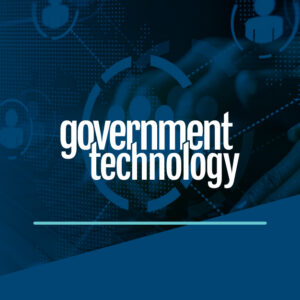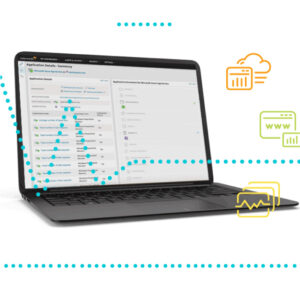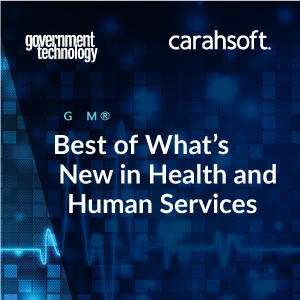Protecting critical infrastructure from cyber threats and ensuring business continuity in the face of disasters is a top priority for organizations today. Luckily, Nutanix AHV, a modern, secure virtualization platform that powers and enhances virtual machines (VMs), can help. Rubrik’s integrated solutions fortify AHV environments against ransomware attacks and enable efficient disaster recovery. By leveraging features like immutable backups, anomaly detection and on-demand cloud-based disaster recovery, organizations can enhance their cyber resilience and minimize the impact of disruptive incidents.
A Simple and Secure Path to VM Management
Nutanix AHV is simple to use and secure by design. The platform works through a centralized control plane, where AHV is integrated into a single application programming interface (API). This eradicates a complicated setup on the customer side. By maintaining constant management and a virtualization layer, Nutanix AHV allows organizations to fulfill mission objectives.
Nutanix AHV features several built-in security features, such as micro-segmentation, data insights, audit trails, ransomware protection and data age analytics.
Nutanix features:
- Built-in, self-healing abilities protect against disk failure, node failure and more
- A vulnerability patch summary automatically alerts users about susceptibility risks and anomalies that need to be addressed
- A life cycle manager provides readmittance testing and deployment testing
- More than one copy of backup data, ensuring that users do not lose valuable information
- Multi-site replication including to and from the public cloud.
Securing data in Nutanix AHV requires more than just the basic perimeter defenses, but a multi-layered strategy. With Rubrik’s data protection abilities, which include immutable backups, automatic encryption and logical air-gapping, agencies and organizations can recover information within minutes and resume mission objectives in the event of a breach.

Securing Data with Rubrik’s Rapid Recovery Abilities
Rubrik, a security cloud solution provider that keeps your data resilient, enables the near-instant recovery of virtual machines and data within the Nutanix AHV environment. Rubrik provides multiple recovery options within AHV, such as file-level recovery, live mount, export, mount virtual disks and downloadable virtual disk files. Through Rubrik, businesses can recover files from older hypervisors into newer AHV environments without having older hypervisors online. Once granted access to the AHV environment, Rubrik automatically discovers and integrates protocols and base level policies for VMs. Rubrik’s recovery process restores data in minutes, regardless of VM size. As VMs get larger and larger, frequently hitting 50 terabytes, this speedy and precise response empowers organization’s incident response plans to be swift and efficient. After scanning the meta data, users are granted file level recovery after anomaly detection, allowing users oversight on affected data.
As the data that organizations manage grows exponentially, data security becomes critical to business functions. Rubrik offers comprehensive data security, continuously monitoring and remediating data risks within the network.
Through Rubrik, businesses can recover files from older hypervisors into newer AHV environments without having older hypervisors online. Once granted access to the AHV environment, Rubrik automatically discovers and integrates protocols and base level policies for VMs.Rubrik’s recovery process restores data in minutes, regardless of VM size. As VMs get larger and larger, frequently hitting 50 terabytes, this speedy and precise response empowers organization’s incident response plans to be swift and efficient.After scanning the meta data, users are granted file level recovery after anomaly detection, allowing users oversight on affected data.
Rubrik also provides constant monitoring for backups. Typically, businesses do not regulate data backlogs, which increases the likelihood that they miss attackers that sit in the system environment for a few days before collecting data. With Rubrik’s threat monitoring and hunting, organizations can search through backups and detect when an anomaly entered the environment. Through Nutanix and Rubrik’s integration, IT teams can reduce complexity, gain oversight, cut down on operational costs and improve resiliency and efficiency.
Automation: The Key to a Proactive Incident Response
Modern cyber threats require a proactive approach to incident response. With automation and orchestration, facilitated by the combined capabilities of Nutanix and Rubrik, organizations can detect, respond to and recover from cyber incidents more efficiently.
Rubrik has a built-in anomaly detection, which searches protected data for strange behavior, such as mass deletion or encryption. As the volume of data on a network increases, organizations often have sensitive data they are not actively monitoring or even know sensitive data maybe exposed. Rubrik clusters are always scanning protected data for anomalies, sensitive data, and known IOC’s allowing customers to select resolution options, such as isolating compromised VMs, or the ability to restore product systems from last known good copies.
Readiness impacts recovery time, and recovery time impacts organization operations. Nutanix AHV’s recovery organization authorizes IT teams to organize VMs into a set of templates, which can be used to create blueprints and launch application recovery. Nutanix also provides organizations with the flexibility to apply policy to each workload, taking control of network security and BC/DR policy with VM level granularity. By allowing organizations to map out their application owners, Nutanix AHV enables businesses to move from a reactive to a proactive security posture, minimizing the impact of attacks and ensuring swift recovery.
Nutanix and Rubrik’s integration creates a powerful security and operational synergy, empowering organizations with the tools they need for network safety and, if necessary, a swift and comprehensive restoration of critical systems, empowering organizations to resume business missions. Nutanix AHV enables organizations to reduce complexity, improve security and achieve a higher level of resilience and operational efficiency.
To learn more about how Nutanix AHV and Rubrik’s integration delivers streamlined data protection, rapid recovery and robust incident response capabilities, watch our webinar, Fortifying AHV: Cyber Recovery and Incident Response with Nutanix and Rubrik.

 How It Works
How It Works Zero Trust Networking
Zero Trust Networking Neutral Host Networks, Private LTE Can Give Agencies Greater Flexibility, Security
Neutral Host Networks, Private LTE Can Give Agencies Greater Flexibility, Security Giving Remote Workers Access to Resources They Need
Giving Remote Workers Access to Resources They Need Hardware
Hardware Start With a Modular Platform
Start With a Modular Platform How to Unleash the Power of Edge Computing
How to Unleash the Power of Edge Computing